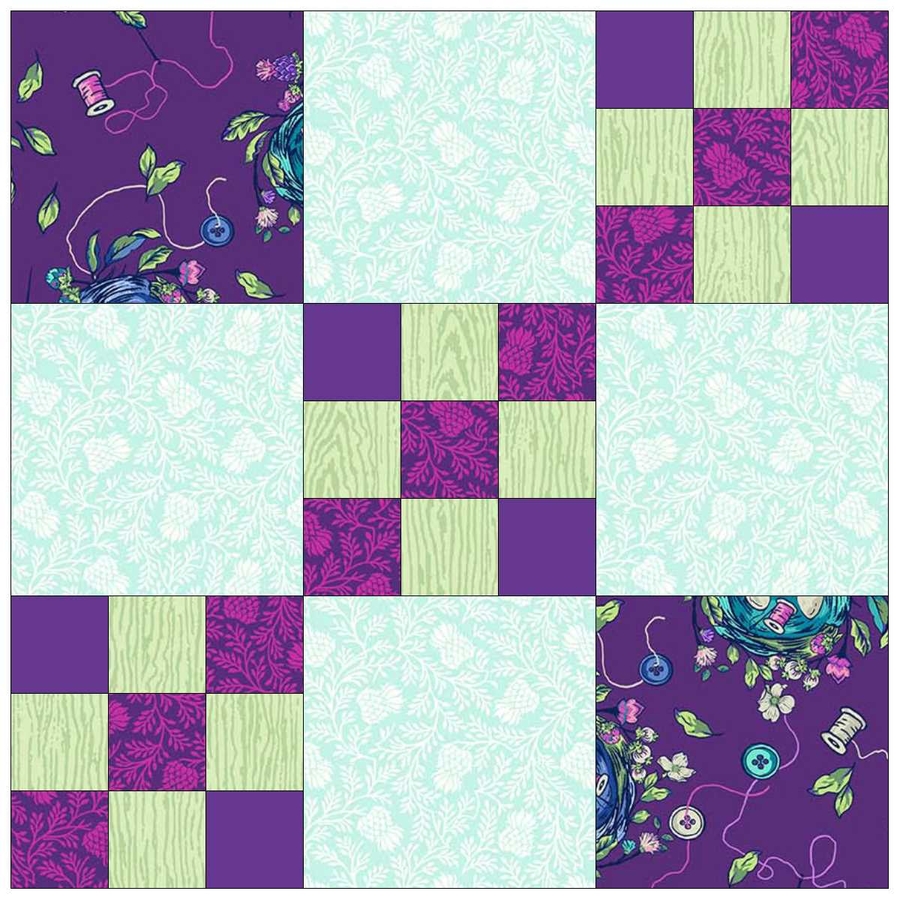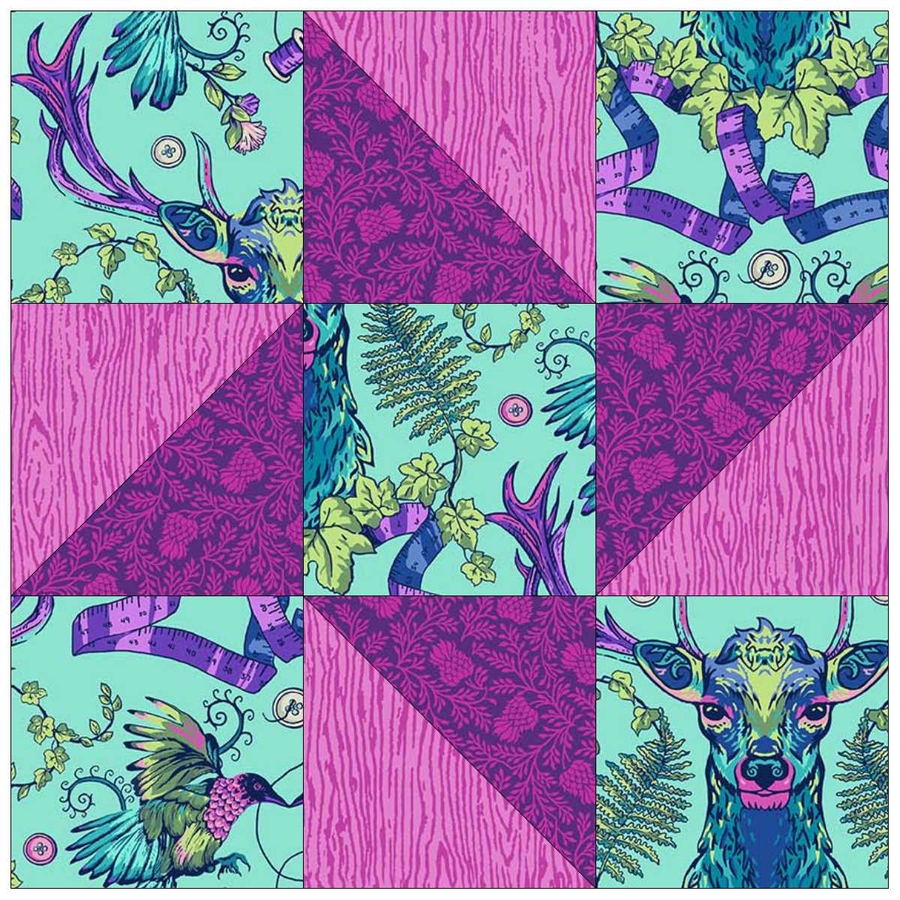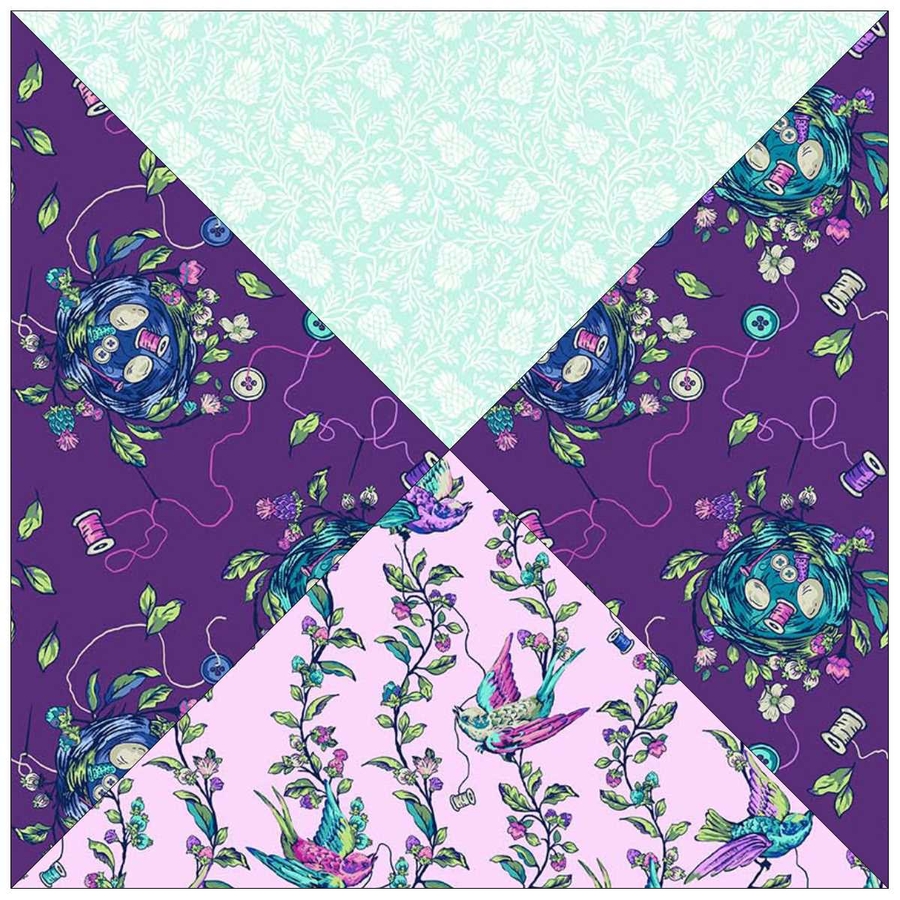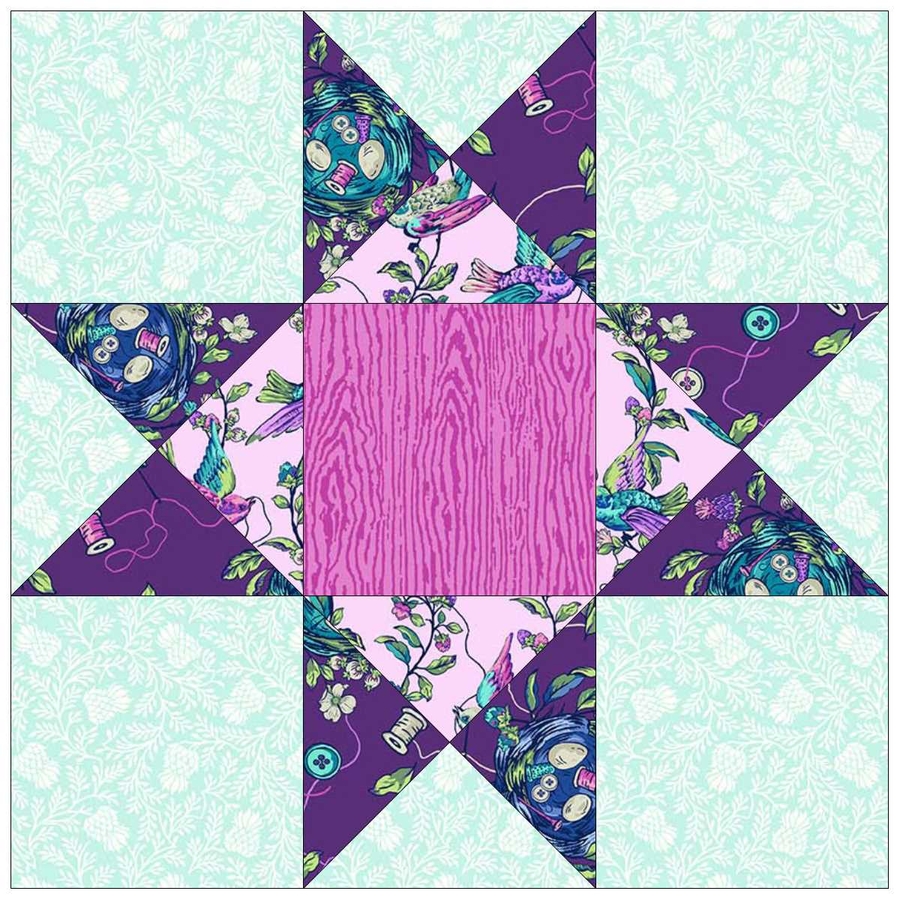Reference chart for common quilting shapes
It’s said that opposites attract. That statement must have a thimble of truth because my husband likes to save money and I like to spend it! 😊 He spent his career examining banks, immersed in a sea of numbers. I’ve spent my career as a quilter, immersed in fabric. Math is not my strong suit. I am blessed that he handles the family finances and figures out how to pay for my “quick run to the fabric shop” sprees without question. I honestly intend to go there only for what I need—a spool of thread or binding fabric. I’m sure he wonders how I could not already have the right fabric color in my massive stash, but he wisely stays silent. That’s true love. 😉
Back in high school, I told my geometry and trigonometry teachers that I’d never use the Pythagorean Theorem in “real life,” so it was pointless to memorize it. How was I supposed to know that someday I’d want to make a quilt from triangles and that formula could help me figure out how to cut them? Thank goodness math wizards are willing to share free online calculators that crunch the numbers for me. I seem to lose millions of brain cells every year…and the ones that knew how to solve math equations died quickly in my early 20’s.
Though I once memorized quilty formulas like how much extra fabric to add to a half-square triangle to allow for seam allowances, those brain cells are fading fast. If your brain is young and agile, you can skip this blog and get back to quilting. But if my experience rings true for you, then download and print out the handy chart we’ve created to help you “do the math” for common quilting shapes.
Blocks based on squares are the simplest—just add ½-inch to the finished square size needed to determine how to cut the fabric.

It took me quite a while to grasp that a “half-square triangle” referred to a triangle formed from half a square, sliced on the diagonal. I kept scratching my head, trying to figure out how a shape could be a triangle AND a square at the same time. I don’t remember when I had that “aha” moment, but I’m sure a few more brain cells exploded at the revelation! Half-square triangles are sewn back together to form a two-color square.

When a square is split in half diagonally to form those triangles, there is no seam allowance along the diagonal. Though you could trace around templates on your fabric to individually cut the triangles, the most common method is to cut them from squares. That means the square must be larger than usual to allow for the seams needed along the diagonals. Add 7/8” to the desired finished square size, and then cut two squares in half diagonally. Two squares will yield four triangles; those are sewn together along the long diagonal line, giving you two “half-square triangle” blocks.
The block below would need five background squares cut ½” larger than the finished size. It also needs two squares of light fuchsia and two squares of dark fuchsia fabrics, each cut 7/8-inch larger than the square’s finished size and sliced on the diagonal. After sewing the dark and light fuchsia triangles together to form squares, those squares should be the same size as the unfinished background squares.

Now that I get what a half-square triangle is, it’s not a long jump to understand a quarter-square triangle. It’s a triangle that makes up one-fourth of a square! Slicing a square apart on both diagonals leaves you with 4 smaller triangles, but they lack seam allowances on their short sides. They’ll eventually join up with other colored quarter-square triangles to form a square again.

For efficient cutting, start with fabric squares cut 1-1/4” larger than the finished size square you want. Now you’ve got more variables for color placement, so the number of squares you’ll need per block will vary according to the pattern. For the block below, you’d need:
- 1 dark pink square cut ½” larger than finished size
- 4 background squares cut ½” larger than finished size
- 1 light pink square cut 1-1/4” larger than finished size (yields 4 quarter-square triangles)
- 2 dark purple squares cut 1-1/4” larger than finished size (yields 8 quarter-square triangles)
- 1 background square cut 1-1/4” larger than finished size (yields 4 quarter-square triangles

In addition to these basic shapes and a few more, our helpful cutting chart also includes tables to help you quickly convert fractions to decimals, as well as yardage conversions to inches and decimals. You can leave your slide rule at home! Those decimals can be confusing—move them one way and I’ve only spent $10.00 at the quilt shop; move them the other way and I’ve spent $100. Even if I’m mathematically challenged, I doubt I can use that excuse when my other half sees the receipt! 😊 Click the below to download the chart. Happy quilting!



